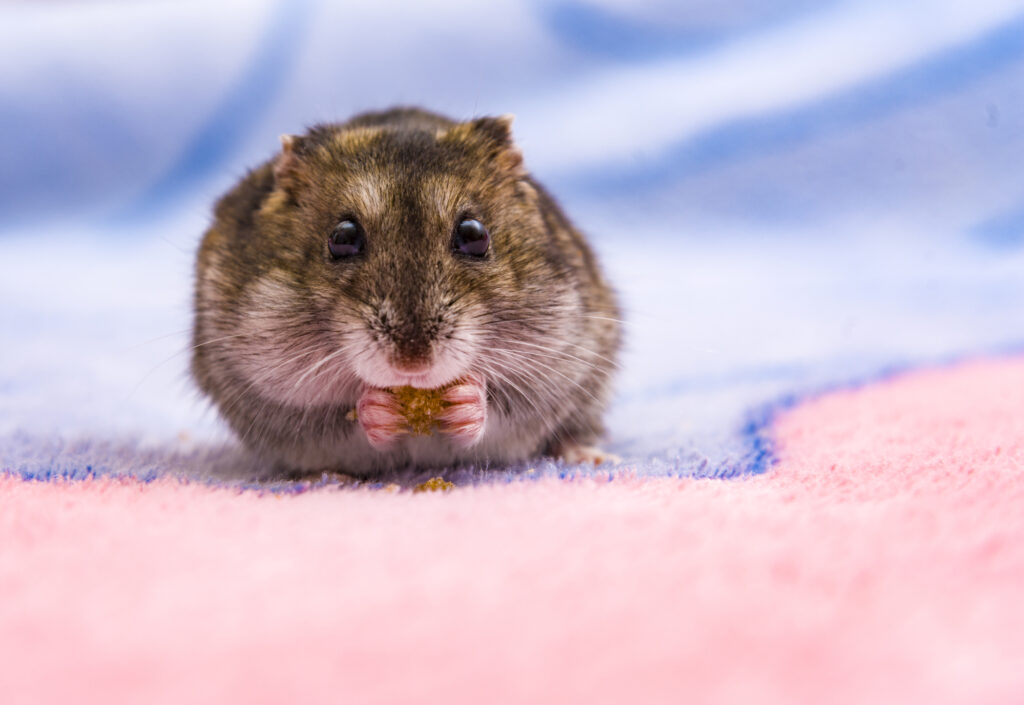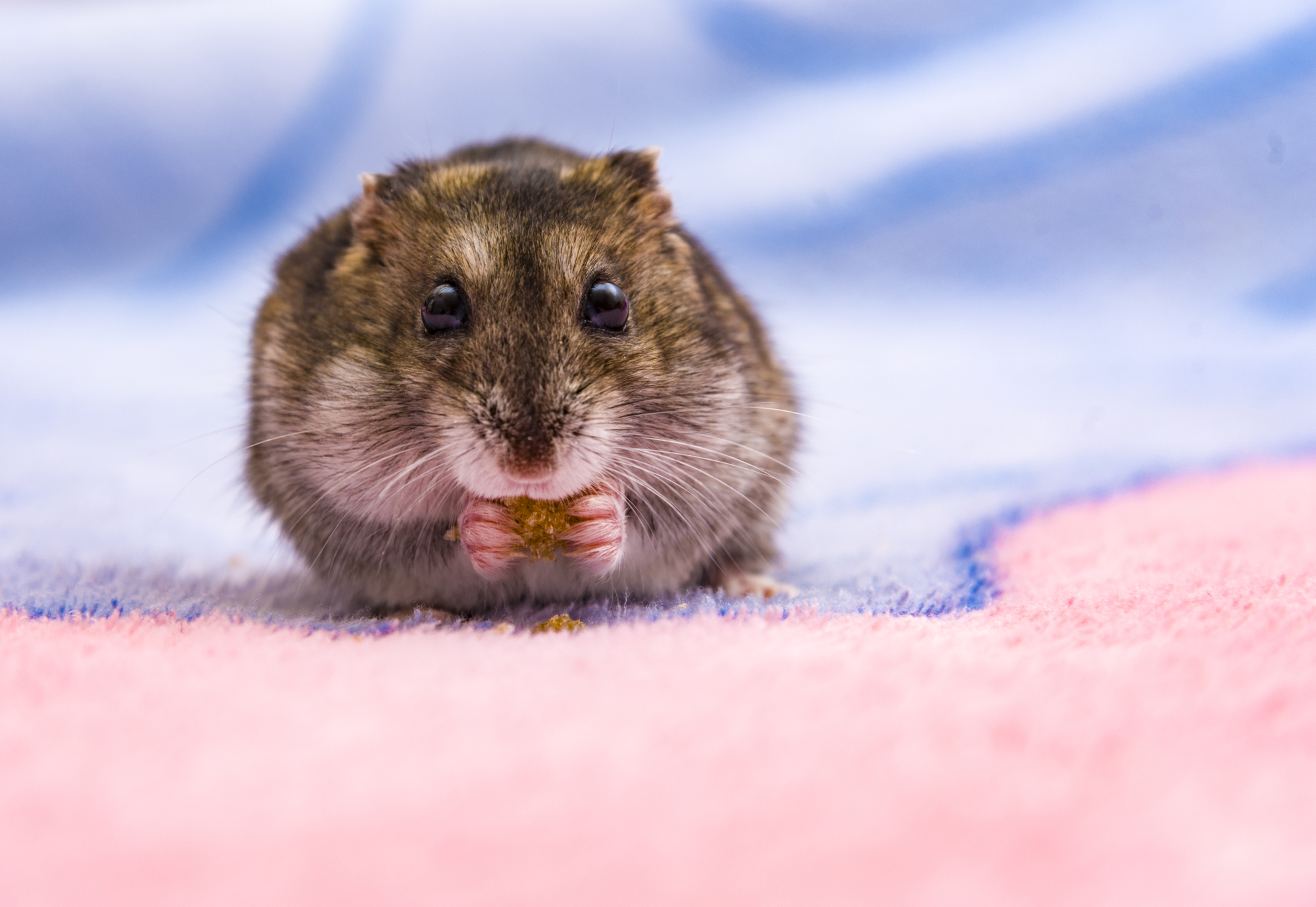Pet owners sometimes worry about giving the right food to their pets. When it comes to hamsters, you have to be cautious about the food that goes into their stomach since they have a highly sensitive digestive system. If you are wondering if your hamsters can eat plums, then the answer is YES. But you need to be wary of certain facts before you feed plums to hamsters.
Plums are sweet and acidic, which means you can feed your hamsters plums only as a treat, and that too, only once a week. And make sure that you never overfeed your hamsters with plums since it can lead to health risks. If you want to find out more about whether hamsters can eat plums or not and why they should or shouldn’t eat plums, then you have come to the right place.
Plums and their origin
Succulent plums, often hailed as the muse of fruits, can be traced back to the Neolithic age (Source: Food And Nutrition). With time, these fruits have gone beyond the limitations of the table and have permeated the culture in many countries. Today, they are connected to good luck and prosperity in China and are respected as pure and sacred in Serbian culture.
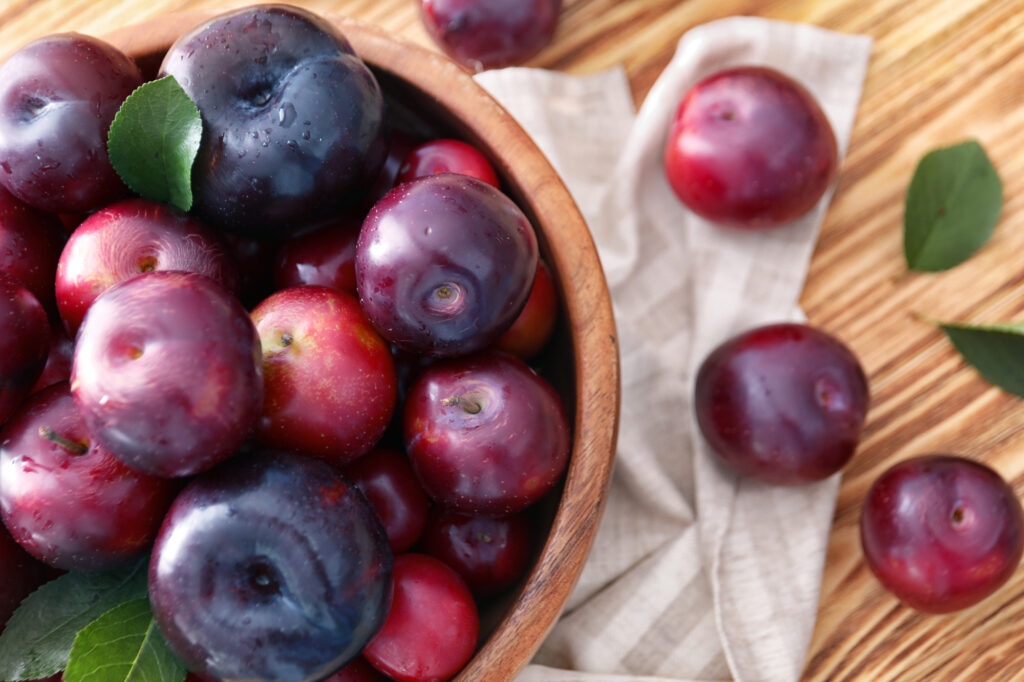
Plums were synonymous with all sweet things. Centuries of plum cultivation have given us more than 2,000 varieties today. Plums are drupes and fleshy fruits that hold one seed inside a tough shell. Although plums are known for their dark purple hues, plums are available in a wide array of colors, including yellow, red, white, and green. Plum trees can endure cold temperatures and require much less maintenance once they become established.
In the late 19th and 20th centuries, botanists Floyd Zaiger and Luther Burbank were interested in crossbreeding plums with several other fruits. This happened before genetic engineering was developed. The first result of this method was the plumcot made from the fusion of plum and apricot. Next came pluots, which resulted from a mix of apricots and Japanese plums. Each of these hybrids was armed with a subset of varieties with different flavors, colors of flesh, and overall appearance.
The nutritional content of plums
Plums contain a very low amount of fats and calories. You can expect around 30 calories in each fruit. Moreover, these modest fruits supply a good amount of other nutrients as well.
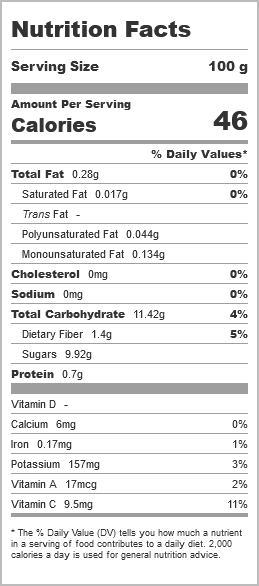
(Source: Fat Secret)
Can hamsters eat plums? Is it safe for hamsters?
As mentioned before, plums have been in use almost since the beginning of civilization. The fruit is closely related to cherries and peaches as per the records of Encyclopedia Britannica. Today, these fruits are widely consumed as compote, dessert fruit, or even baked with cakes and other savories. But can hamsters eat plums? To find that out, you have to first know the health benefits and risks of these lovely fruits.
Health benefits of plums
Plums can offer several health benefits to your hamster, as discussed below.
A rich source of essential vitamins
Plums are a great source of Vitamin A, which helps the immune system, eyesight, reproduction, and cardiovascular health. Plums are also rich in Vitamin C, which serves as an antioxidant and aids the body in producing collagen. Moreover, Vitamin C helps in boosting the body’s absorption of iron from the regular diet.
Helps in weight management
Since plums are low in fat content, these fruits serve as a beneficial snack for anyone looking to shed excess weight. Moreover, several pieces of research show that plums, as well as prunes (dried plums), help a person feel fuller for a long time and thus reduce the chances of overeating (Source: Medical News Today). Plums also help in the growth of healthy bacteria in the gut, which, in turn, helps absorb nutrients and remove toxins.
Improves cardiac health
Plums are a good source of potassium which helps in mitigating cardiovascular diseases such as stroke, heart disease, and high blood pressure. Research conducted in 2017 found that a potassium-rich diet aided in minimizing artery stiffening among mice with high-cholesterol diets (Source: US Department of Health and Human Sciences). Thus, plums can improve the cardiac health of your hamster.
Rich in antioxidants
Plums are rich in antioxidants which are responsible for preventing cell damage from free radicals. Free radicals are unstable molecules that are produced inside the body due to exercising, converting food particles into energy, breathing in the smoke of cigarettes, and exposure to sunlight.
These free radicals lead to oxidative stress within the body, which causes cell damage. Oxidative stress leads to an increased risk of developing diabetes, certain kinds of cancers, and cardiovascular ailments.
Plums are high in polyphenol content which is a highly beneficial plant compound. Polyphenols contain a good level of antioxidants. Certain research shows that polyphenols also protect a person from being afflicted by type 2 diabetes (Source: PubMed).
Risks
Before giving plums to hamsters, make sure you remove the stone. Never crush or blend the stone and give it to your hamster. Never let your hamster chew the stone either because the stone contains amygdalin that converts into the toxin cyanide.
When feeding plums to your hamsters, make sure to give in moderation. Otherwise, it can lead to certain risks, such as:
- Diabetes: Since plum contains a good amount of carbohydrates and sugar, it often leads to diabetes in these little animals.
- Digestive issues: The high amount of sugar not only increases the risk of diabetes but also creates digestive problems. Hamsters have highly delicate stomachs, which means that they must be fed a balanced diet.
- Calcium stones: Plums contain a high level of oxalates which causes the formation of calcium stones in hamsters.
Different breeds of hamsters vs. plums
The amount of plum you can feed your hamsters depends on which species of hamster you have. Even though these fruits are mainly served as treats, they must be combined with other treats such as cabbage, carrots, and pumpkin seeds. Let’s look at the different kinds of hamsters and find out whether they can eat plums.
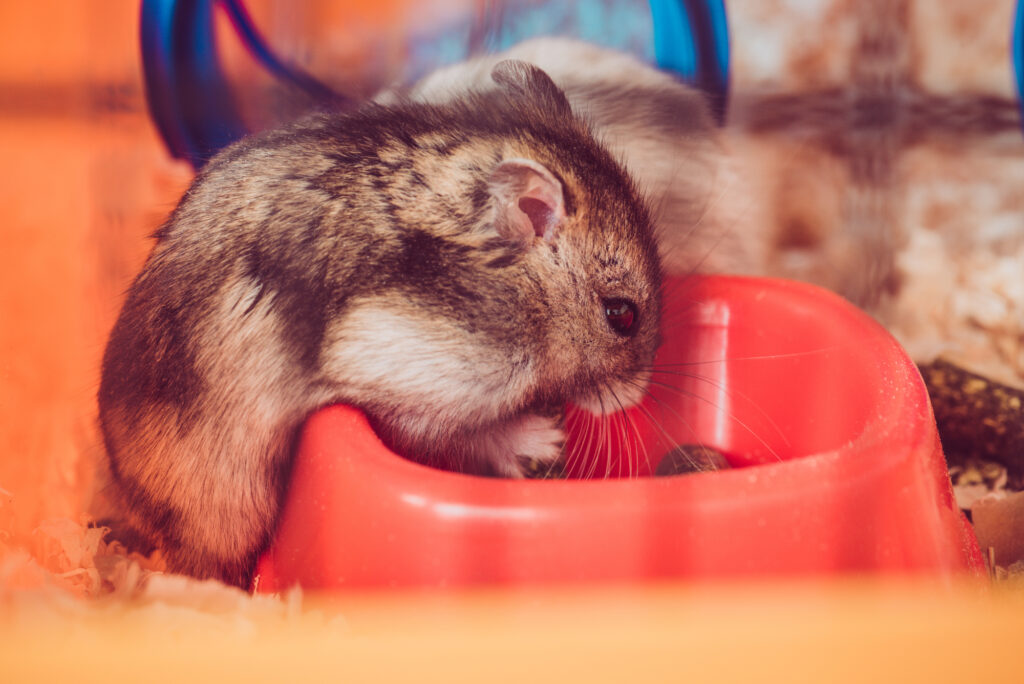
Can Chinese dwarf hamsters eat plums?
Chinese hamsters are a part of the dwarf hamster family. They cannot tolerate sugary food like plums. So you shouldn’t give plums to your Chinese dwarf hamsters.
Can Campbell dwarf hamsters eat plums?
Campbell hamsters are also dwarf hamsters and are extremely vulnerable to obesity and diabetes. So, you shouldn’t give plums to Campbell hamsters.
Can Russian dwarf hamsters eat plums?
Similar to other hamsters that belong to the dwarf group, the Russian dwarf hamsters also have a very small and delicate digestive system. You should never feed them acidic or sugary foods like plums as they will immediately develop diabetes. If you have to give them any treat, it’s better to stick to items like bananas, lettuce, etc.
Can Roborovski hamsters eat plums?
Roborovski hamsters are the smallest hamster species. But they are also very active. So, their digestive system is stronger than other dwarf hamsters. So, you can give them a quarter of a teaspoon of plums every week.
Can Syrian hamsters eat plums?
Syrian hamsters are the largest species of hamsters. They have the most tolerant digestive systems among all pet hamsters. So, you can give your Syrian hamsters around half a teaspoon of plums once a week (Source: Just Hamsters). This restriction is primarily due to the high sugar content of the fruit. Feeding more of it will pave the way for an increased risk of diabetes.
FAQ
Can hamsters eat plum branches?
Plum tree branches are highly toxic for these little animals. So, it’s best to avoid giving branches of plum trees to hamsters.
Can hamsters have plum leaves?
Just like the branches of plum trees, the leaves of plum trees are also toxic (contain hydrogen cyanide) for hamsters. If hamsters consume plum leaves by any chance, it can lead to serious health problems. So, don’t give plum leaves to hamsters.
How many plums are safe for hamsters?
Plums should be given to hamsters only as a treat. Therefore, you should only give them a single piece per serving. Also, make sure that the pit is removed since it has a good amount of cyanide which will be harmful to hamsters.
How often can you serve plums to your hamsters?
It is safe to serve plums to your hamster only one or two times a week. You should never consider plums to be a part of your hamster’s daily diet. It can become very harmful for your hamster if you feed him too many plums. Moreover, it contains a high amount of sugar, which can be detrimental to his health.
Other aspects to watch out for
If possible, you should buy organic plums for your hamsters. This is because the ones sold in the local grocery store may have pesticides and other harmful chemicals sprayed onto them. In case it is hard to find organic plums, make sure that you wash the fruit for a couple of seconds to remove pesticides.
If you feed rotten or poor-quality plums to these little animals, there’s a high chance of their stomachs getting upset. So, if they cannot eat everything you serve within a day, you have to remove those pieces. When you are feeding these fruit pieces for the first time, you should be watchful of any changes in your hamsters’ behavior as well as the consistency and shade of their stools. If there are any unwanted changes, you must take your pet to a vet right away.
Summary: Key takeaways
Plums are quite nutritious and make a good treat for humans as well as hamsters. Since these fruits have different kinds of vitamins and minerals, these fruits are a great treat for hamsters. But you must serve plums in moderation since excess of this fruit can wreak havoc on their stomach.
- Humans are not the only species on earth who enjoy eating plums. Several other species love the taste of this fruit, including hamsters and even insects. Insects tend to ravage these fruits and shred them into tiny pieces and put their larvae inside them. That’s why it’s important to wash the fruit and cut it into small pieces before serving it to your hamster.
- Hamsters can utilize the health benefits of plums only when these fruits are served in moderation. Too much of these fruits can cause serious digestive problems.
- Only Robo and Syrian hamsters can have plums. Campbell, Chinese, and Russian dwarf hamsters cannot tolerate the high sugar content of this fruit.
How to give plums to hamsters?
Preparing this savory fruit doesn’t take much time. However, it’s very important to serve it the right way so that our tiny pets can make the most of it. First of all, you have to wash the fruit thoroughly and make sure that all the dust particles are removed.
Then, remove the pit and cut the fruit into small pieces so that your hamster can enjoy the fruit without any risk of choking. Last but not least, once your hamster has finished eating the fruit, you have to remove the parts that are left unconsumed to rule out any chances of bacteria build-up in the cage.
